
Practice finding rates and determine if there is a slope uisng this data nugget.
- Subject:
- Mathematics
- Material Type:
- Activity/Lab
- Data Set
- Lesson Plan
- Provider:
- Data Nuggets
- Author:
- Data Nuggets
- Date Added:
- 10/24/2022

Practice finding rates and determine if there is a slope uisng this data nugget.
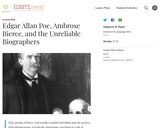
We are naturally curious about the lives (and deaths) of authors, especially those, such as Edgar Allan Poe and Ambrose Bierce, who have left us with so many intriguing mysteries. But does biographical knowledge add to our understanding of their works? And if so, how do we distinguish between the accurate detail and the rumor; between truth and exaggeration? In this lesson, students become literary sleuths, attempting to separate biographical reality from myth. They also become careful critics, taking a stand on whether extra-literary materials such as biographies and letters should influence the way readers understand a writer's texts.
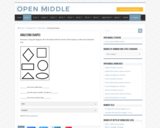
Open Middle tasks provide opportunities for student to approach a mathematical task using different strategies and representations. They can be used as a warm-up/closing activity, as a formative assessment, or to facilitate discourse and discussion and get insite into student thinking and problem solving. These tasks provide a great opportunity for student to engage with the Standards for Mathematical Practice.
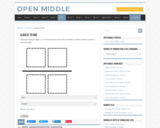
Open Middle tasks provide opportunities for student to approach a mathematical task using different strategies and representations. They can be used as a warm-up/closing activity, as a formative assessment, or to facilitate discourse and discussion and get insite into student thinking and problem solving. These tasks provide a great opportunity for student to engage with the Standards for Mathematical Practice.
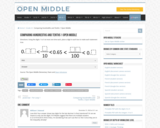
Open Middle tasks provide opportunities for student to approach a mathematical task using different strategies and representations. They can be used as a warm-up/closing activity, as a formative assessment, or to facilitate discourse and discussion and get insite into student thinking and problem solving. These tasks provide a great opportunity for student to engage with the Standards for Mathematical Practice.
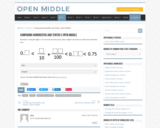
Open Middle tasks provide opportunities for student to approach a mathematical task using different strategies and representations. They can be used as a warm-up/closing activity, as a formative assessment, or to facilitate discourse and discussion and get insite into student thinking and problem solving. These tasks provide a great opportunity for student to engage with the Standards for Mathematical Practice.
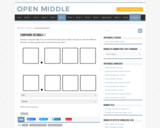
Open Middle tasks provide opportunities for student to approach a mathematical task using different strategies and representations. They can be used as a warm-up/closing activity, as a formative assessment, or to facilitate discourse and discussion and get insite into student thinking and problem solving. These tasks provide a great opportunity for student to engage with the Standards for Mathematical Practice.

Open Middle tasks provide opportunities for student to approach a mathematical task using different strategies and representations. They can be used as a warm-up/closing activity, as a formative assessment, or to facilitate discourse and discussion and get insite into student thinking and problem solving. These tasks provide a great opportunity for student to engage with the Standards for Mathematical Practice.
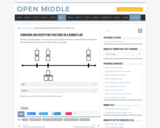
Open Middle tasks provide opportunities for student to approach a mathematical task using different strategies and representations. They can be used as a warm-up/closing activity, as a formative assessment, or to facilitate discourse and discussion and get insite into student thinking and problem solving. These tasks provide a great opportunity for student to engage with the Standards for Mathematical Practice.
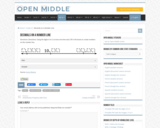
Open Middle tasks provide opportunities for student to approach a mathematical task using different strategies and representations. They can be used as a warm-up/closing activity, as a formative assessment, or to facilitate discourse and discussion and get insite into student thinking and problem solving. These tasks provide a great opportunity for student to engage with the Standards for Mathematical Practice.
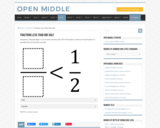
Open Middle tasks provide opportunities for student to approach a mathematical task using different strategies and representations. They can be used as a warm-up/closing activity, as a formative assessment, or to facilitate discourse and discussion and get insite into student thinking and problem solving. These tasks provide a great opportunity for student to engage with the Standards for Mathematical Practice.
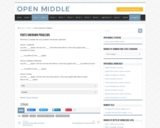
Open Middle tasks provide opportunities for student to approach a mathematical task using different strategies and representations. They can be used as a warm-up/closing activity, as a formative assessment, or to facilitate discourse and discussion and get insite into student thinking and problem solving. These tasks provide a great opportunity for student to engage with the Standards for Mathematical Practice.
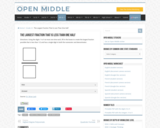
Open Middle tasks provide opportunities for student to approach a mathematical task using different strategies and representations. They can be used as a warm-up/closing activity, as a formative assessment, or to facilitate discourse and discussion and get insite into student thinking and problem solving. These tasks provide a great opportunity for student to engage with the Standards for Mathematical Practice.
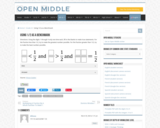
Open Middle tasks provide opportunities for student to approach a mathematical task using different strategies and representations. They can be used as a warm-up/closing activity, as a formative assessment, or to facilitate discourse and discussion and get insite into student thinking and problem solving. These tasks provide a great opportunity for student to engage with the Standards for Mathematical Practice.

In this lesson, students investigate these questions by analyzing videos of dancing through the decades. With the help of a worksheet, student groups watch footage of the Charleston and Lindy Hop, the Mambo, "Love-in" dancing, Disco, and Break Dancing. Based on their informed observation of these styles, they then debate whether dance has "evolved" in American culture, or remained mostly the same.
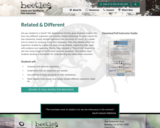
Are you related to a lizard? This Adaptations Activity gives students insights into
how very different organisms are actually related (distantly). Students search for two somewhat closely related organisms (like two kinds of insects, or a spider and an insect) to compare, using Venn diagrams. Then they debate which two organisms studied by a team are most closely related, supporting their ideas with evidence and reasoning. Finally, they interpret a “Tree of Life” diagram to see how living things on Earth share common ancestors. This activity helps students develop a foundation for understanding key ideas about evolution.
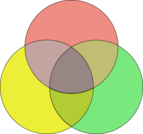
This lesson teaches students how to summarize argumenative articles and find connections in the authors' arguments and purposes.